The Java Collections Framework is one of the most useful and powerful parts of the Java programming language. It provides a standard way to store, modify, and retrieve groups of objects. Every Java developer needs to be familiar with collections, whether preparing for an interview or developing real-world applications.
What is the Collections Framework?
The Collections Framework in Java is a single way to show and work with collections. It has:
- List, Set, Queue, Map, and other interfaces
- ArrayList, HashSet, LinkedList, and HashMap are all classes.
- Algorithms, such as sorting and searching, which are available through utility methods in the Collections class
This framework sets rules for how developers should work with data structures, which makes code easier to read and faster.
Core Interfaces in Collections Framework

List
- Duplicate elements are permitted.
- Implementations: Vector, Stack, LinkedList, and ArrayList
- Example:
List<String> names = new ArrayList<>();
names.add(“Alice”);
names.add(“Bob”);
names.add(“Alice”); // duplicates allowed
Set
- Duplicates are not permitted.
- Implementations: TreeSet, LinkedHashSet, and HashSet.
- Example:
Set<Integer> numbers = new HashSet<>();
numbers.add(10);
numbers.add(20);
numbers.add(10); // ignored
Queue
- adheres to the First-In-First-Out (FIFO) principle.
- Implementations:
PriorityQueue,ArrayDeque - Example:
Queue<String> queue = new LinkedList<>();
queue.add(“Task1”);
queue.add(“Task2”);
System.out.println(queue.poll()); // Task1
Map
- holds key-value pairs, and each key is distinct.
- Implementations:
HashMap,LinkedHashMap,TreeMap,Hashtable - Example:
Map<String, Integer> scores = new HashMap<>();
scores.put(“Alice”, 90);
scores.put(“Bob”, 85);
scores.put(“Alice”, 95); // value updated
Why Use Collections Framework?
- Reusability: Time is saved by using predefined data structures.
- Efficiency: Performance-oriented.
- Maintainability: Code is easier to read when it follows a standardized approach.
- Flexibility: Several implementations for various applications.
Useful Utility Methods (Collections Class)
Java provides a utility class Collections with helpful methods:
Collections.sort(list)→ Sorts a list.Collections.reverse(list)→ Reverses order.Collections.max(collection)→ Finds the maximum element.Collections.min(collection)→ Finds the minimum element.
Example:
List<Integer> nums = Arrays.asList(3, 1, 4, 1, 5);
Collections.sort(nums);
System.out.println(nums); // [1, 1, 3, 4, 5]
Best Practices with Collections
- Select the appropriate data structure for your use case (e.g., use LinkedList for frequent insertions/deletions, ArrayList for random access, and HashMap for fast lookups).
- To prevent type-casting problems, use generics.
- For flexibility, choose interfaces (List, Set, Map) over physical implementations.
- Use Collections.synchronizedList() or think about thread-safe substitutes like ConcurrentHashMap for multi-threaded environments.
Conclusions
The foundation for effectively managing data in Java is the Collections Framework. Collections offer a standardized and dependable method of managing information, whether it be in the form of basic object arrays or intricate data structures. You will greatly enhance your Java coding abilities and be ready for interviews and real-world projects by becoming proficient with Lists, Sets, Queues, and Maps, and their utility methods.





